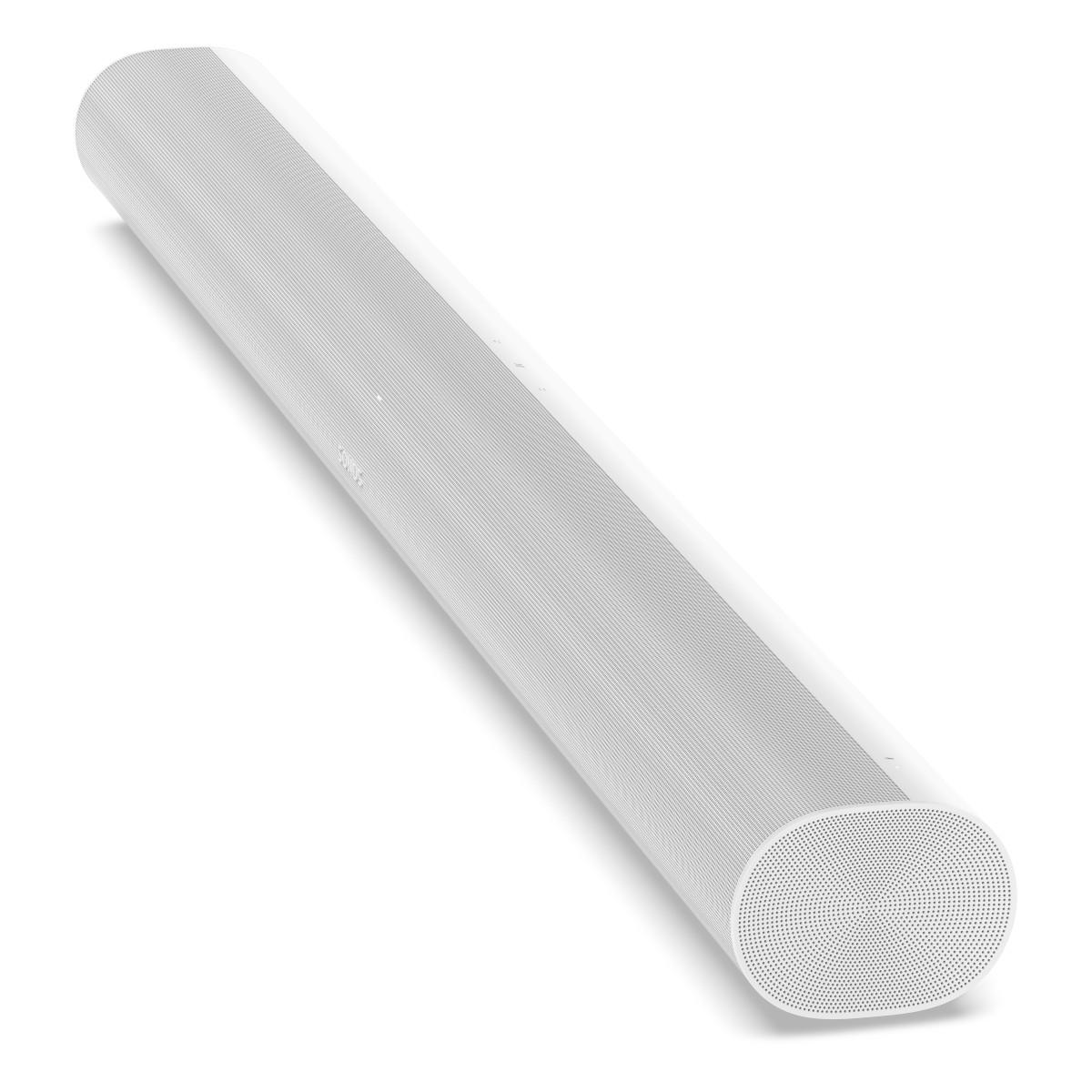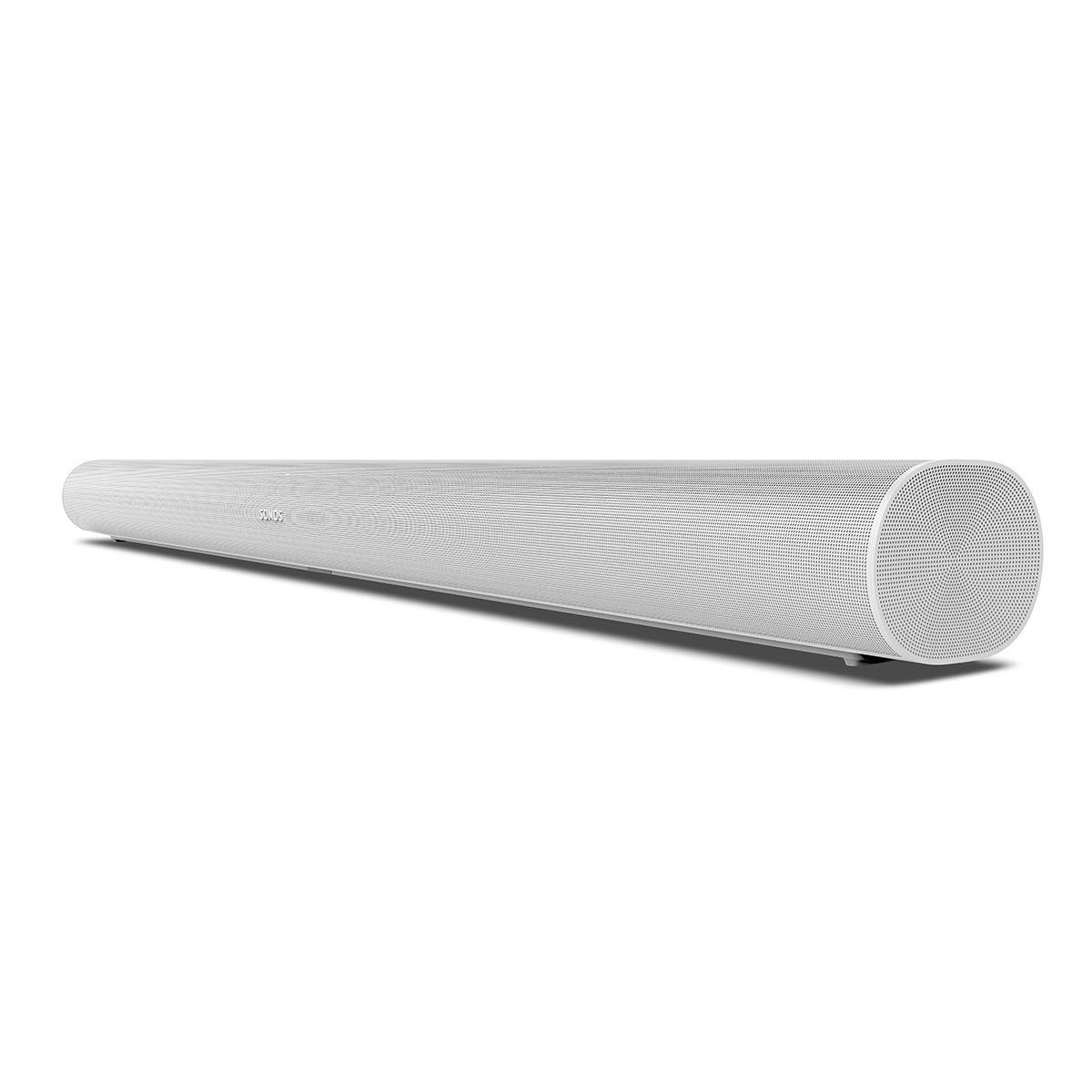
In today's home theater landscape, soundbars have become the go-to solution for better TV audio without the complexity of traditional surround systems. Let's dive deep into comparing two of Sonos' most popular options: the premium Sonos Arc ($564.44) and the mid-range Sonos Beam Gen 2 ($352.70).
Since releasing the Arc in 2020 and the Beam Gen 2 in late 2021, Sonos has continued refining their software while maintaining the same excellent hardware. Both models represent different approaches to modern home audio - the Arc aims for maximum performance, while the Beam Gen 2 balances capability with practicality.
Room size and TV matching are crucial for soundbar selection. The Arc measures 45 inches wide, making it ideal for TVs 49 inches and larger. Its larger size houses 11 discrete drivers, including upward-firing speakers that bounce sound off your ceiling for true Dolby Atmos effects (where sounds appear to come from above).
The Beam Gen 2 takes a more compact approach at 26 inches wide. It's perfect for smaller rooms and TVs in the 32-50 inch range. Despite its size, it packs five drivers into a sophisticated array that creates surprisingly immersive sound through digital processing.

The Arc's speaker array creates a genuinely immersive experience. Its upward-firing drivers produce authentic height effects for Dolby Atmos content - imagine hearing rain falling from above or helicopters flying overhead. The wider soundstage (the perceived width of the audio) makes action scenes more engaging and dialogue more naturally positioned.
The Beam Gen 2 uses psychoacoustic processing (digital tricks that fool your brain about sound direction) to simulate Atmos effects. While not as convincing as the Arc's physical approach, it's remarkably effective for its size and price. Both units feature Sonos' Speech Enhancement mode, which boosts dialogue frequencies to improve clarity during quiet scenes.
For music, the Arc's additional drivers provide better stereo separation and more dynamic range (the difference between quiet and loud sounds). Bass response is fuller, though neither soundbar matches a dedicated subwoofer. The Beam Gen 2 produces well-balanced sound but can't match the Arc's room-filling capability.

Both soundbars support modern audio formats, but the Arc's HDMI eARC connection allows for higher-quality uncompressed audio formats. The Beam Gen 2 uses standard HDMI ARC, which handles most content but may require some audio compression with the highest-quality formats.
Both models excel at smart home integration, featuring:
The Arc adds extra expansion options through additional surround speakers and subwoofers, though both can be part of a larger Sonos system.

In practice, room acoustics significantly impact soundbar performance. The Arc's larger size and driver array provide more consistent performance in challenging rooms, while the Beam Gen 2 may struggle more with reflected sound in larger spaces.
For home theater use, the Arc's superior Atmos implementation and wider soundstage make it the clear choice for dedicated viewing rooms. The Beam Gen 2 excels in bedroom or small living room setups where its compact size and good-enough performance make more sense.
The Arc commands a $212 premium over the Beam Gen 2. This price difference buys you:

The Beam Gen 2's value proposition centers on delivering 80% of the Arc's performance at 60% of the price, making it an excellent choice for many users.
Choose the Arc if:
Choose the Beam Gen 2 if:
Both soundbars deliver excellent performance for their respective sizes and price points. The Arc represents Sonos' best audio technology, while the Beam Gen 2 offers remarkable value without sacrificing essential features.
Remember that both can be expanded later with additional Sonos speakers and subwoofers, though the Arc's superior processing and driver array will always maintain its performance advantage. Choose based on your room size, budget, and performance requirements rather than trying to stretch the Beam Gen 2 beyond its intended use case.
Sonos Arc ($564.44) |
Sonos Beam Gen 2 ($352.70) |
|---|---|
| Size - Affects TV matching and room placement | |
| 45" x 4.5" x 3.4" (ideal for 49"+ TVs) | 25.6" x 2.7" x 3.9" (best for 32-50" TVs) |
| Audio Architecture - Determines sound quality and Atmos performance | |
| 11 drivers including upward-firing speakers | 5 drivers with virtual processing |
| Dolby Atmos Implementation - Impacts immersive sound experience | |
| True Atmos with physical height channels | Virtual Atmos through digital processing |
| Power Output - Affects maximum volume and room coverage | |
| Class-D amplification for each driver, larger room coverage | Class-D amplification, suited for small/medium rooms |
| Connectivity - Determines audio format compatibility | |
| HDMI eARC, Ethernet, WiFi, AirPlay 2 | HDMI ARC, Ethernet, WiFi, AirPlay 2 |
| Voice Control - Smart home integration | |
| Alexa & Google Assistant built-in | Alexa & Google Assistant built-in |
| Room Calibration - Optimizes sound for space | |
| Trueplay tuning with iOS device | Trueplay tuning with iOS device |
| Expandability - Future system growth | |
| Full support for surrounds and subwoofer | Can add surrounds and subwoofer |
| Audio Formats - Content compatibility | |
| Dolby Digital, TrueHD, Atmos, DTS, PCM | Dolby Digital, Atmos (via DD+), PCM |
| Weight - Installation consideration | |
| 13.78 lbs | 6.35 lbs |
The Sonos Arc ($564.44) offers superior audio quality and true Dolby Atmos, while the Sonos Beam Gen 2 ($352.70) provides better value in smaller spaces. The Arc is better for pure performance, while the Beam Gen 2 is better for value.
The Sonos Arc costs $564.44, while the Sonos Beam Gen 2 is priced at $352.70, making it $211.74 less expensive.
The Beam Gen 2 is ideal for small rooms due to its compact 25.6-inch width. The Arc at 45 inches wide is often too large for smaller spaces.
Yes, but they implement it differently. The Arc uses physical upward-firing speakers for true Atmos, while the Beam Gen 2 uses virtual processing to simulate Atmos effects.
Both work well for music, but the Arc provides better stereo separation and fuller sound. The Beam Gen 2 offers good musical performance for its size.
Both the Arc and Beam Gen 2 offer excellent dialogue clarity through their Speech Enhancement feature, though the Arc's larger center channel provides slightly better performance.
Both can benefit from adding a subwoofer, but the Arc has better built-in bass response. The Beam Gen 2 may need a subwoofer more for home theater use.
The Arc is better suited for TVs 49 inches and larger, while the Beam Gen 2 works best with TVs between 32 and 50 inches.
Yes, both the Arc and Beam Gen 2 include built-in support for Amazon Alexa and Google Assistant.
Yes, both the Arc and Beam Gen 2 support Apple AirPlay 2 for easy streaming from iOS devices.
Both are equally easy to set up through the Sonos app, though the Beam Gen 2 is lighter and easier to handle at 6.35 lbs compared to the Arc's 13.78 lbs.
Yes, both the Arc and Beam Gen 2 can be wall-mounted using Sonos' optional mounting brackets, sold separately.
We've done our best to create useful and informative comparisons to help you decide what product to buy. Our research uses advanced automated methods to create this comparison and perfection is not possible - please contact us for corrections or questions. These are the sites we've researched in the creation of this article: whathifi.com - soundandvision.com - en.community.sonos.com - cnet.com - worldwidestereo.com - abt.com - creativeaudio.net - target.com - sonos.com - worldwidestereo.com - businessinsider.com - en.community.sonos.com - youtube.com - whathifi.com - en.community.sonos.com - techradar.com - youtube.com - consumerreports.org - bestbuy.com - youtube.com - sonos.com - wave-electronics.com - en.community.sonos.com - epicsystems.tech - tomsguide.com - bestbuy.com